If you want to know about the Egyptian architecture or roman architecture or gothic architecture, please click the link.
Prehistoric architecture refers to the architectural styles and structures that were built before the written record of human history. These structures were built during the Stone Age, Bronze Age, and Iron Age, and were made from materials such as stone, mud, and wood.
- The definition of prehistoric architecture is, quite literally, pre-history. In other words, from a time before mankind was capable of recording its history in writing. This makes the prehistoric era one that is very difficult to define, dating back tens of thousands of years. For an era that is so vast it’s difficult to recognize any real themes in its architecture, but there are a few key forms and concepts that pre-date any known civilization and were significant enough that they would influence key architectural developments in the centuries and millennia to come.
- Prehistory basically covers the Old Stone Age, Middle Stone Age, and New Stone Age (Paleolithic, Mesolithic and Neolithic) periods, as well as portions of the Bronze and Iron Ages. These ages refer to the materials with which tools were made during those periods. So, the earliest tools were made of stone and then people developed bronze and iron metal tools
1) Architectural influences
i) History
- Direct human ancestors evolved in Africa from 2.3 million years ago – Homo habilis, Homo erectus, homo sapiens, homo sapiens sapiens.
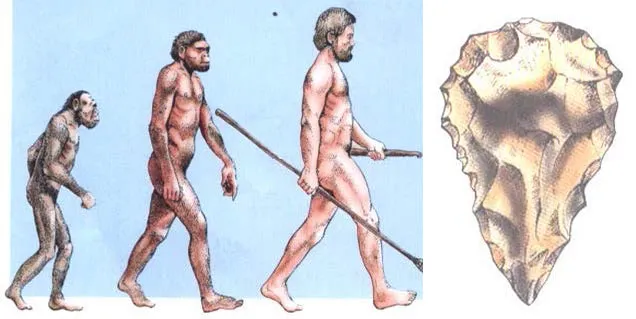
- The success of the human race was largely due to the development of tools – made of stone, wood, bone.
- Humans spread from Africa into Southern Europe, Asia.
- Could not settle far north due to the cold climate.
- From Siberia by foot into North America.
- From Southeast Asia by boat into Australia.

- Before 9000 BC, nomadic life of hunting & food gathering.
- By 9000 BC, farming and agriculture was practiced.
- Fertile soil and plentiful food.
- Animal domestication for work, milk, wool.
- People wanted to settle down, live in communities.
- First villages in the Middle East, South America, Central America, India and China.

- Some people needed not farm, so they spent time on other work – pot-making, metal-working, art and… architecture!
ii) Religion
- No organized religion.
- The dead are treated with respect – burial rituals and monuments.
2) Architectural character
i) Materials
- Animal skins, wooden frames, animal bones.
ii) Construction system
- Existing or excavated caves.
- Megalithic, most evident in France, England and Ireland.
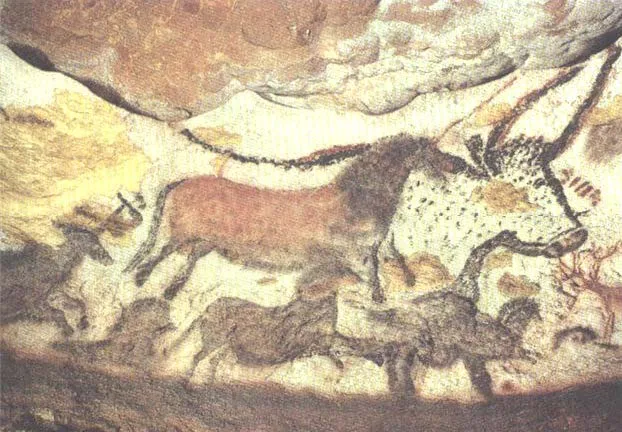
iii) Decoration
- Caves paintings in Africa, France and Spain.
- Sculpture.
3) Examples
i) Menhir
A menhir is a large standing stone that was used in prehistoric times, especially during the Neolithic period. The term “menhir” comes from the Breton language and means “long stone”.
Menhirs were found throughout Europe and Asia and were used for a variety of purposes, such as marking graves, astronomical observatories, and boundary markers. In some cases, they were also used as religious or ceremonial sites.
The size of menhirs varies greatly, with some being only a few feet tall, while others are over 20 feet tall. The stones were often quarried from nearby locations and transported to the site where they were erected. Some of the largest menhirs, such as those at Stonehenge in England, weighed several tons and required a great deal of effort and skill to transport and erect.
Despite their age, many menhirs have survived to this day and continue to be popular tourist destinations. They are also an important part of the archaeological record and provide valuable insights into the beliefs and practices of prehistoric cultures.
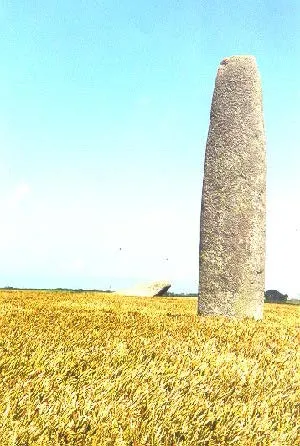
- A single, large upright monolith
- Serves a religious purpose
- Sometimes arranged in parallel rows, reaching several miles and consisting of thousands of stones

ii) Dolmen
A dolmen is a type of prehistoric monument that consists of a large, flat stone placed on top of several upright stones. Dolmens were used as tombs in many cultures and were especially common during the Neolithic period.
The term “dolmen” comes from the Breton language and means “stone table”. These structures were found throughout Europe, Asia, and Africa and were used as burial sites for individuals or groups of people. The remains were usually placed in a small chamber within the dolmen, which was created by the placement of the large, flat stone on top of the upright stones.
The exact purpose of dolmens is still not fully understood, but they are believed to have had religious or spiritual significance for the cultures that built them. Some researchers have suggested that they may have been used as astronomical observatories or as places of worship.
Despite their ancient origins, many dolmens have survived to this day and are an important part of the cultural heritage of the regions where they are found. They are popular tourist destinations and provide valuable insights into the beliefs and practices of prehistoric cultures.
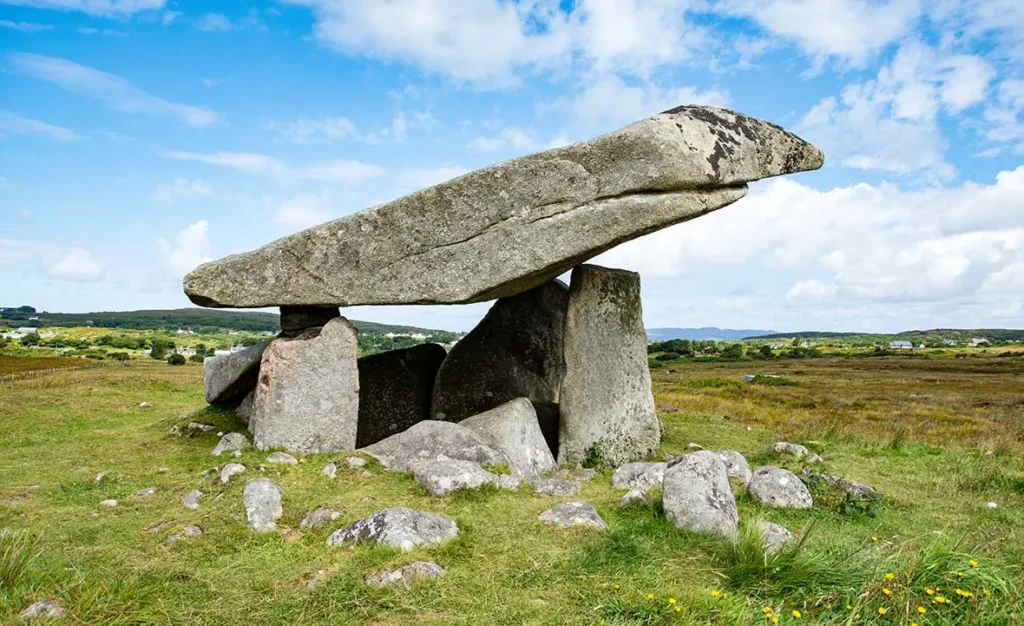
- Tomb of standing stones usually capped with a large horizontal slab
iii) Cromlech
A cromlech is a type of prehistoric monument made up of a circular arrangement of large stones. The term “cromlech” comes from the Welsh language and means “circle of stones”.
Cromlechs were used for a variety of purposes, including as astronomical observatories, places of worship, and as tombs for the dead. They were found throughout Europe, Asia, and Africa and are especially associated with the Neolithic and Bronze Age cultures.
The stones used in cromlechs were often quarried from nearby locations and transported to the site where they were erected. In some cases, the stones were shaped and placed in a specific arrangement, such as in the case of Stonehenge in England.
Despite their ancient origins, many cromlechs have survived to this day and are an important part of the cultural heritage of the regions where they are found. They are popular tourist destinations and provide valuable insights into the beliefs and practices of prehistoric cultures.
Cromlechs are also considered to be among the most impressive architectural achievements of the ancient world and continue to inspire awe and wonder in those who visit them.
- Enclosure formed by huge stones planted on the ground in circular form Stonehenge, England (2800 – 1500 BC)
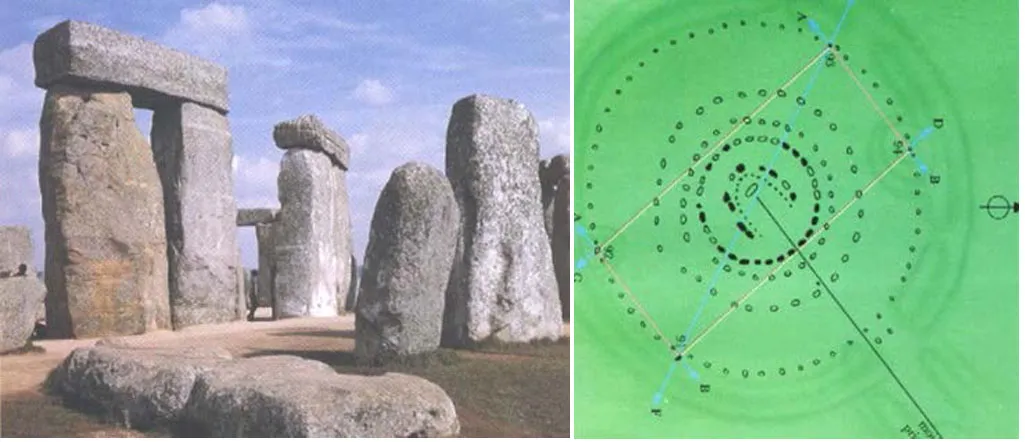
- Most spectacular and imposing of monolithic monuments
- Outer ring, inner ring, innermost horseshoe-shaped ring with open end facing east
- Largest stones weigh 45 to 50 tons, came from Wales 200 km away
- Stones transported by sea or river then hauled on land with sledges and rollers by hundreds of people, raised upright into pits, capped with lintels
Genuine architecture – it defines exterior space
A solar observatory – designed to mark the sun’s path during sunrise on Midsummer Day
iv) Tumulus or passage grave
A tumulus, also known as a burial mound, is a type of prehistoric monument that consists of a large, circular or oval-shaped mound of earth and stones that covers a burial chamber. Tumuli were used as tombs in many cultures and were especially common during the Neolithic and Bronze Age periods.
The term “tumulus” comes from the Latin language and means “mound”. Tumuli were found throughout Europe and Asia and were used to bury individuals or groups of people. The remains were usually placed in a burial chamber within the tumulus, which was created by digging a pit and covering it with a roof made of stone or other materials.
The exact purpose of tumuli is still not fully understood, but they are believed to have had religious or spiritual significance for the cultures that built them. Some researchers have suggested that they may have also been used as astronomical observatories or as symbols of power and wealth.
Despite their ancient origins, many tumuli have survived to this day and are an important part of the cultural heritage of the regions where they are found. They are popular tourist destinations and provide valuable insights into the beliefs and practices of prehistoric cultures.
A passage grave is a type of tumulus that consists of a long, narrow passage that leads to a central chamber. The passage is lined with stones and is covered with a roof made of stone slabs or earth. Passage graves were used as tombs and were especially common in the Neolithic period.
Like tumuli, the exact purpose of passage graves is still not fully understood, but they are believed to have had religious or spiritual significance for the cultures that built them. Some of the most famous passage graves include Newgrange in Ireland and Maeshowe in Scotland.

- Dominant tomb type
- Corridor inside leading to an underground chamber
v) Primitive dwellings
Primitive dwellings refer to the earliest forms of housing and shelter that were used by humans throughout history. These dwellings were typically simple structures that were made from materials found in the local environment, such as branches, leaves, animal hides, and clay.
The design and construction of primitive dwellings varied greatly depending on the cultural and environmental factors of the region where they were built. For example, in warmer climates, people might build huts or shelters made from bamboo and thatched roofs, while in colder climates, people might build igloos made from ice blocks.
Throughout human history, primitive dwellings evolved and became more sophisticated as people learned new construction techniques and acquired new materials. However, even today, some communities around the world still live in simple, primitive dwellings that are similar to those used by their ancestors many generations ago.
Primitive dwellings provide valuable insights into the lives and cultures of early humans and help us to understand how they adapted to their environment and met their basic needs for shelter and safety.
- Mostly had one room
- The development of more complex civilizations led to division of the room into smaller ones for eating, sleeping, socializing
- In places where no industrial revolution has occurred to transform building methods and increase population density, houses show little difference from primitive ones
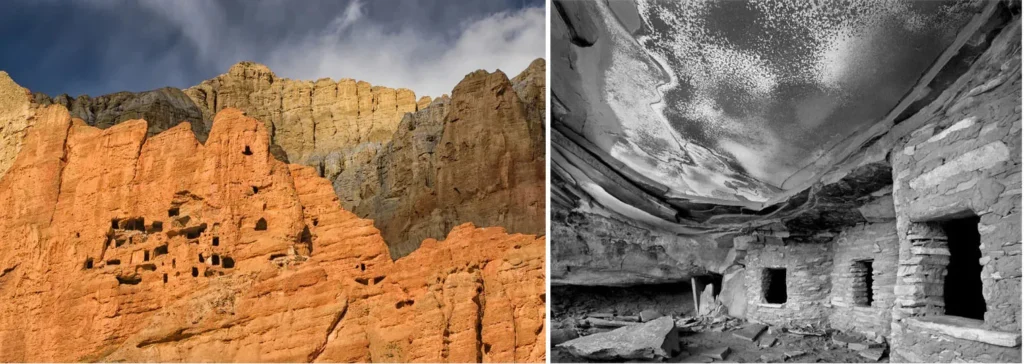
Natural or Artificial Caves

Beehive Hut
Trullo – dry walled rough stone shelter with corbelled roof
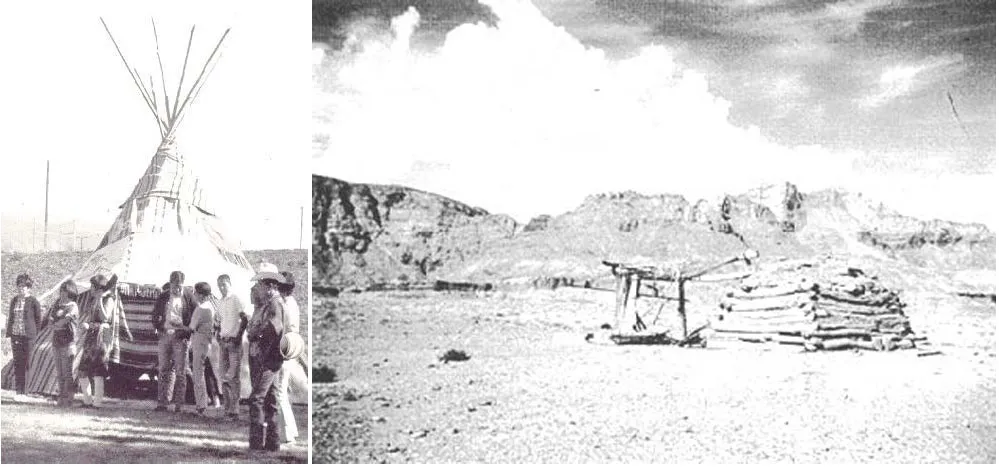
Wigwam or Tepee
- conical tent with wooden poles as framework
- Covered with rush mats and an animal skin door
Hogan – primitive Indian structure of joined logs
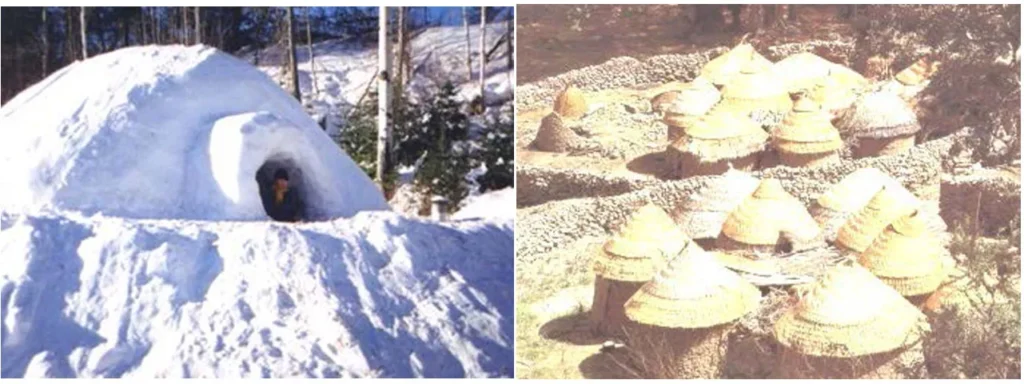
Igloo – Innuit (Eskimo) house constructed of hard-packed snow blocks built up spirally
Nigerian hut – with mud walls and roof of palm leaves
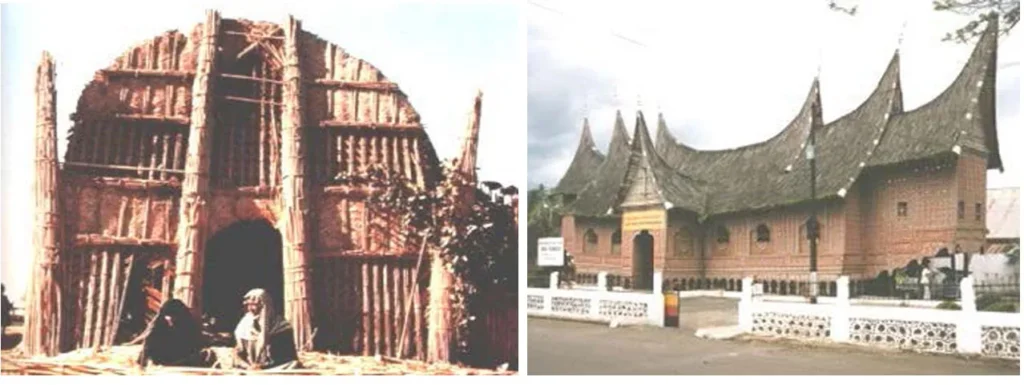
Iraqi mudhif – covered with split reed mats, built on a reed platform to prevent settlement
Sumatran house – for several families, built of timber and palm leaves, the fenced pen underneath is for livestock
It is fascinating to study prehistoric architecture because it gives us a glimpse into the lives and cultures of our early human ancestors, and shows how they were able to adapt to their environments and build structures to meet their needs.
This is very informative